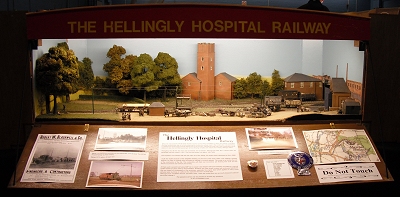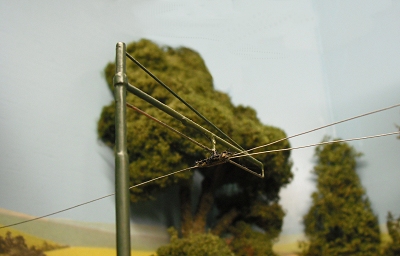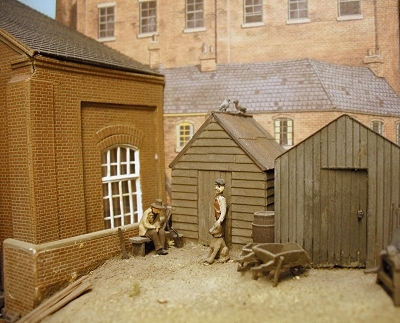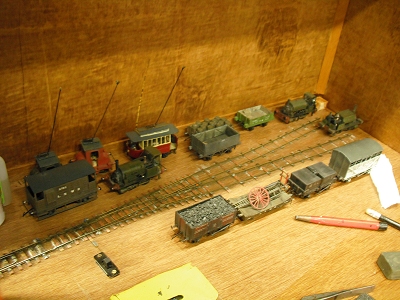

From the outset, my intention with the model was to build a pretty 3-dimensional picture rather than a truly accurate miniature version of the line.
There were many reasons for this but the main one was that when I started I hadn't been able to visit the line and so didn't really know how it was laid out. As it was I managed to get the water tower on the opposite side of the tracks from where it should be.
In my defence it's not clear from the photographs where everything is and those pictures that exist tend to all be taken from the same directions anyway.

The other main influence for the model was the overhead wire. Specifically how hopelessly unreliable it is in 4mm scale.
I spent a lot of time trying to keep the trolley poles on the wire and ended up using steel wire and cast brass frogs from Tramalan. This combination works better than anything else and yet I still wasn't confident that were could use the electric locos all the time.
The decision was made therefore to set the model during the time the line was being converted from steam to electric. A happy side effect of this is that the traffic can be realistic and prolific enough to entertain a paying exhibition audience.

With contractors on site I had the opportunity to build lots of lovely little cameo scenes. On a model 3 and a half feet long you desperately need something to persuade people to hang around and look properly.
We have a little spotting list on the display at the front. This lists various animals and birds for people to find and it really works. Non-enthusiasts find themselves stuck for ten minutes or more because they want to complete the challenge. We might not be able to offer thundering express trains but we can still entertain !
In the meantime I have carried out quite a bit of research on how railways were built. The huts in the photo are based on workmen's huts seen in pictures of the Great Central being built. Apart from the figures, wheelbarrow and animals, everything in the photo is scratchbuilt.

Off-stage things are nice and simple. At one end there is the end of the run round loop, at the other a couple of sidings.
All track is Code 75 rail soldered to copper clad sleepers. No point motors are used, all that is handled by some wire in tube technology, except in the fiddle yards where slide switches switch both the tracks and the polarity of the frogs.
As you can see I have far too much stock for such a little layout but then who cares, it's my train set ! Underneath you would normally see even more in boxes, just in case we want to ring the changes.
The overhead wire ends at the entrances to the scenic section. Little metal ramps put the trolley poles on reasonably reliably.
